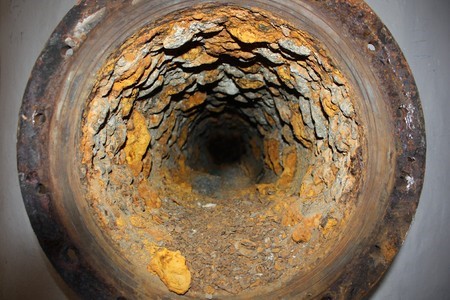With the current descending oil prices and the COVID-19 situation, it’s becoming mandatory for operators to increase production efficiency by reducing OPEX. How can you reduce OPEX while increasing production efficiency? This sounds like a difficult challenge indeed. In my article, I’d like to outline how to reduce OPEX for chemical injection with FluidCom.
How NOT to reduce OPEX for chemical injection
In order to reduce the OPEX for chemical injection, one of the most important key parts is to reduce the manual site work, especially maintenance work. Maybe you’ll also consider to completely forgo chemical injection itself, but this would be not a very well-considered idea. Trust me, the use of chemical injection is crucial for keeping your assets such as pipelines, valves, etc. healthy and secure flow assurance. Figuratively speaking, it could be compared to nutrition or medicine for the human body. To keep your health or to heal and recover from sickness, you need to take medicine regularly after a certain schedule. You need to eat food on a daily base and not too much or too little. We don’t doubt the doctor’s prescription because he’s an expert- not like us who do not know the exact dosages of medicines to take and for which time period. Even though we might have to spend extra money, we go for it because we want to avoid suffering and pain. This allegory also can be transferred to the use of chemical injection.
In daily business, you tend to trust the chemical supplier to inject the correct amount of chemicals into your assets. Also, due to the difficulty of full automation and to keep your assets maintenance-free, 12% -20% of chemical overdosage have been believed as usual and unavoidable to prevent underdosing which will lead to asset damage. What are the results of overdosing? A significant production loss, poor water quality, and maintenance costs.
In this blog, I would like to introduce our reliable contribution to OPEX reduction by presenting you our reference for an unmanned solution. Excited? Then continue reading.
FluidCom for Unmanned Wellhead Platforms (UWHP)
In oil and gas offshore, UWHP are idealistic assets to optimize production efficiency, reduction of CAPEX, OPEX, and HSE.
But, to make this possible, the reliability of machinery is an important essential component.
This is especially true for very remote and unmanned platforms.
One of the main reasons for the unmanned platform is how you can decrease maintenance time, but, especially for conventional IRCD technology, operators would need to keep and maintain the full injection system on the mother platform and provide a multiline umbilical over to the unmanned platform. This would incur extremely expensive equipment and high operational costs.
To that point, we can say that the FluidCom Chemical Injection Solution is a maintenance-free device that can be installed directly on UWHP. This is a huge advantage: No need to visit on a fixed interval.
Please, see the below video why FluidCom can realize it.
[ot-video][/ot-video]
Why you should trust FluidCom
Advantages of FluidCom:
- A maintenance-free chemical injection system
- Achieves full remote-control capabilities
- Can be installed directly on UWHP
- No need for a high-value multi-line umbilical
- Provides a single chemical injection line, with chemical distribution controlled by FluidCom on board of UWHP
FluidCom has currently been installed and in operation on UWHP in the Norwegian sector of the North Sea. We received feedback from our customers that the implementation of FluidCom provides substantial cost savings by supplying chemicals through a single distribution line, rather than several km of high alloy umbilical.
Having the Chemical Flow Controller installed closer to the injection point, as a replacement for injecting through a several km long umbilicals, you will achieve a much more accurate injection rate. It’s also important to remember that the ability to install the FluidCom System directly on UWHP will provide additional space for other important equipment on the main platform.
More information needed?
Do you want to get more information about FluidCom? Please contact us via our contact form or contact your local Yokogawa Partner.





